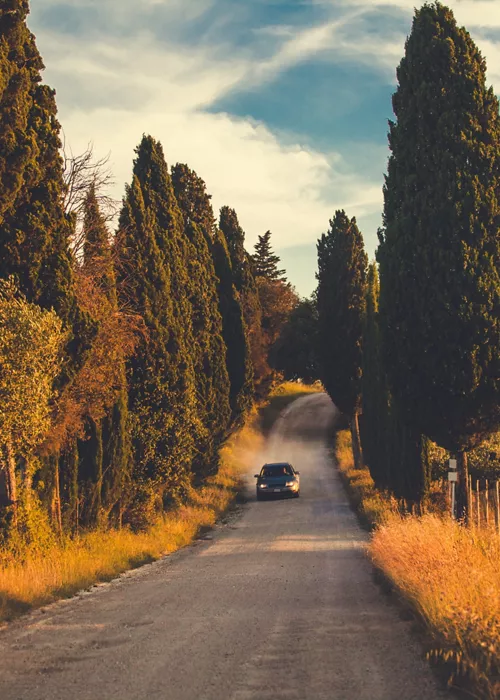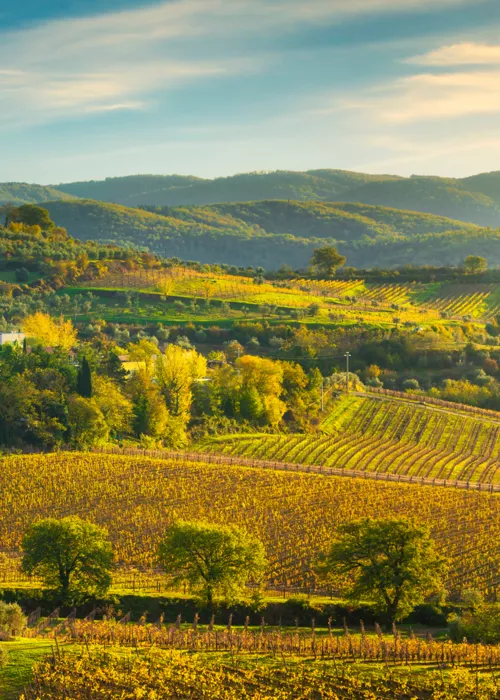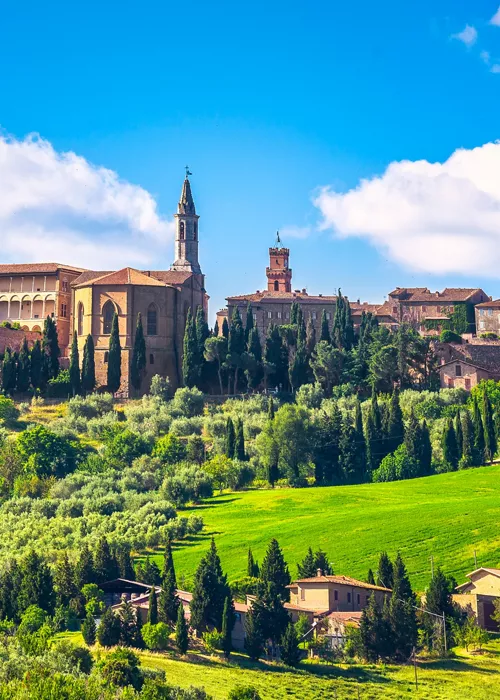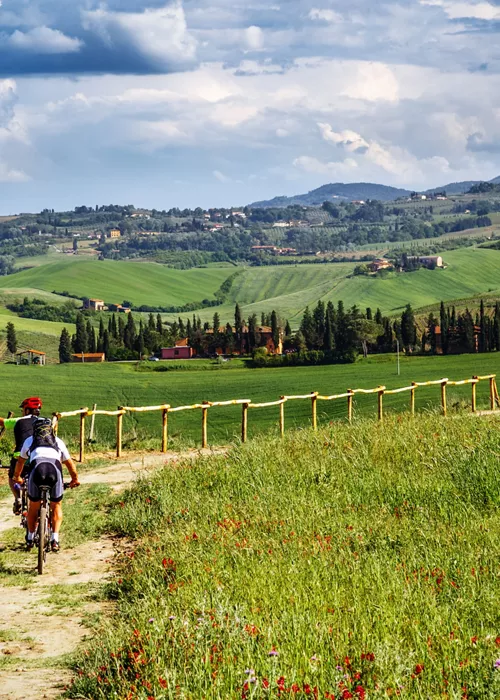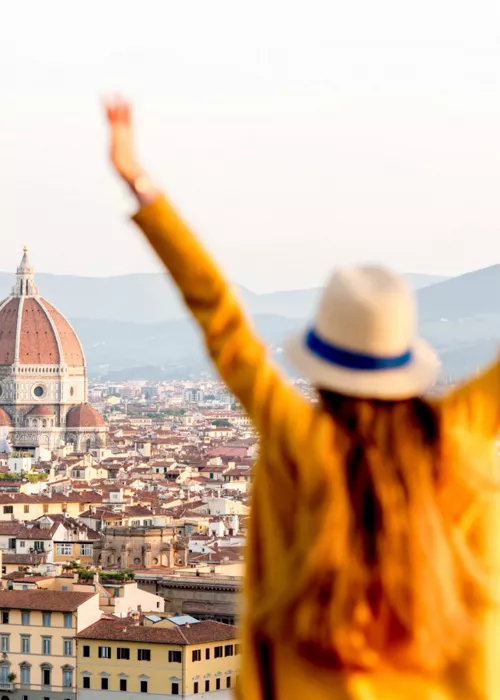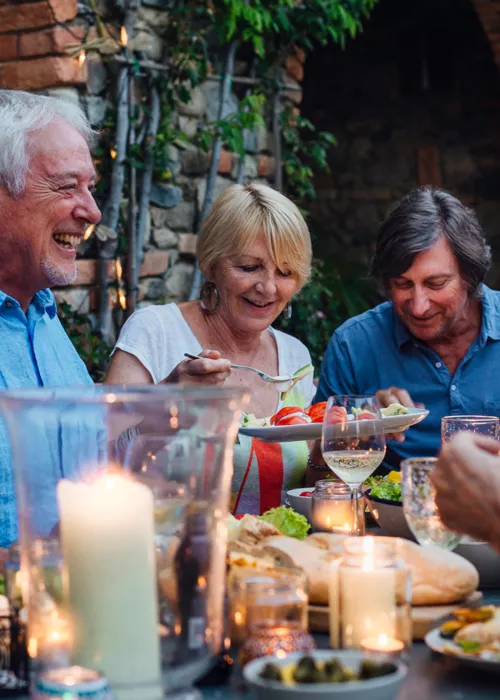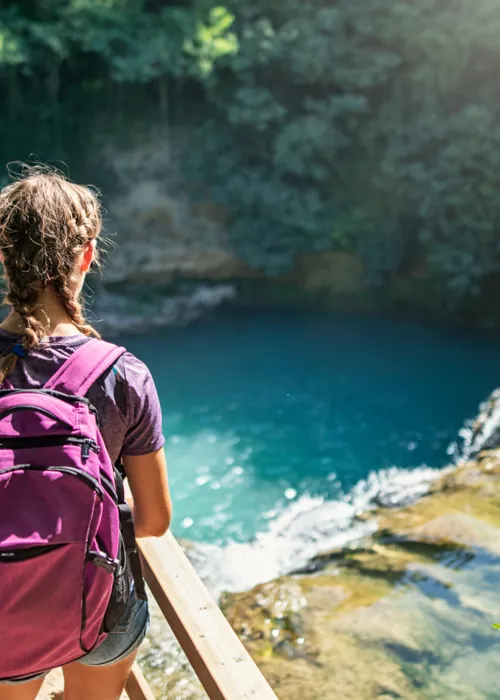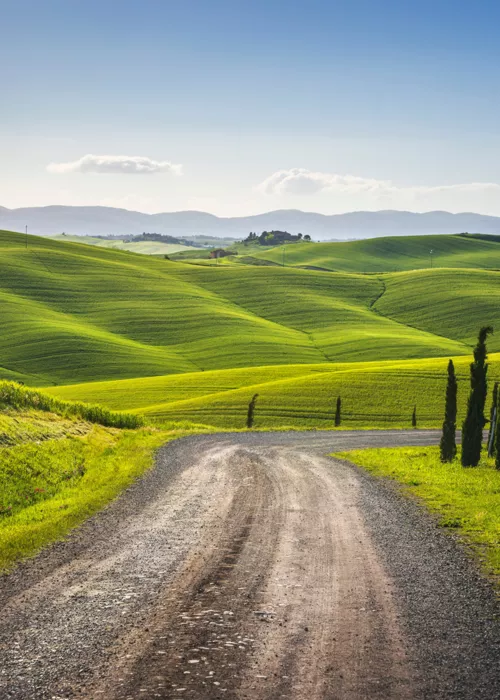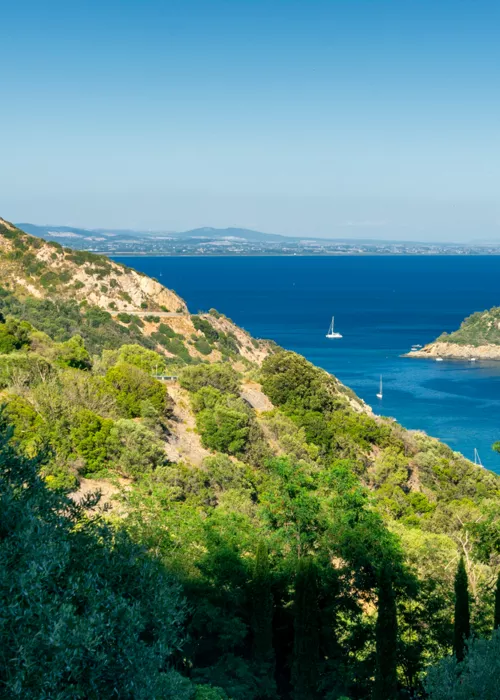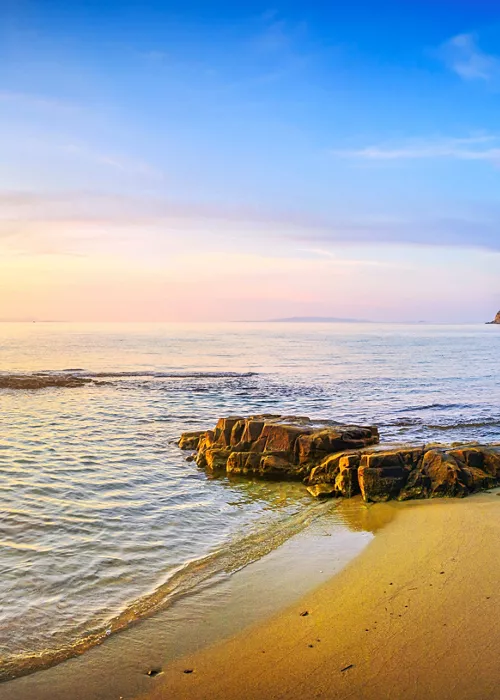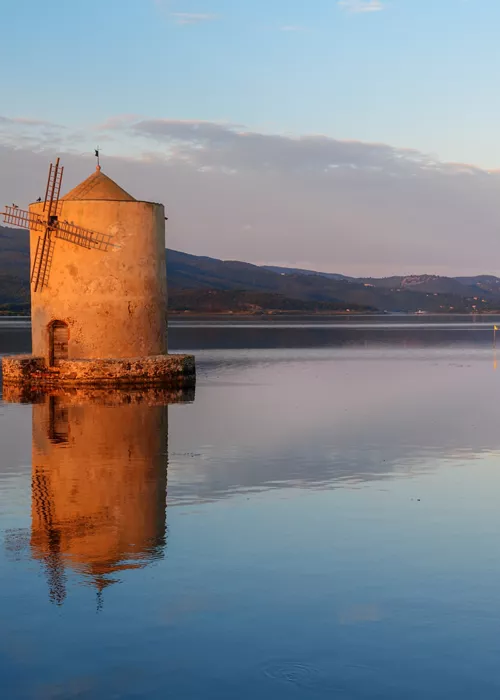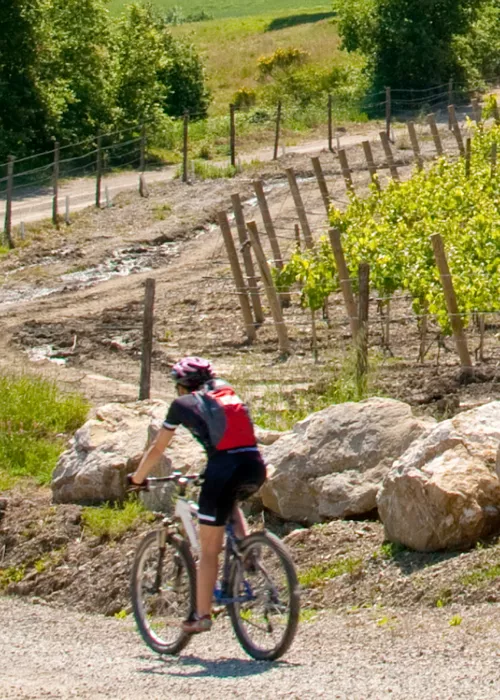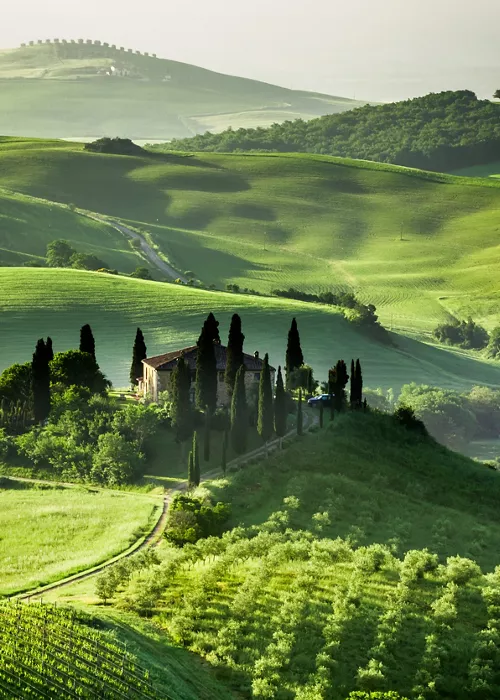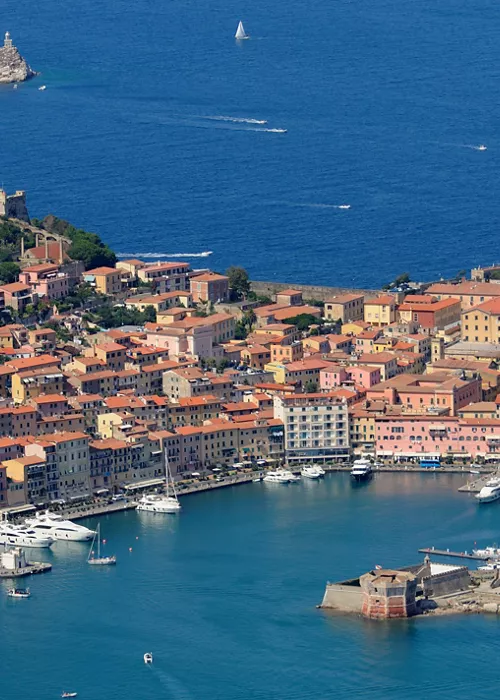Toscana: The Way of Saint Francis
5 minutes
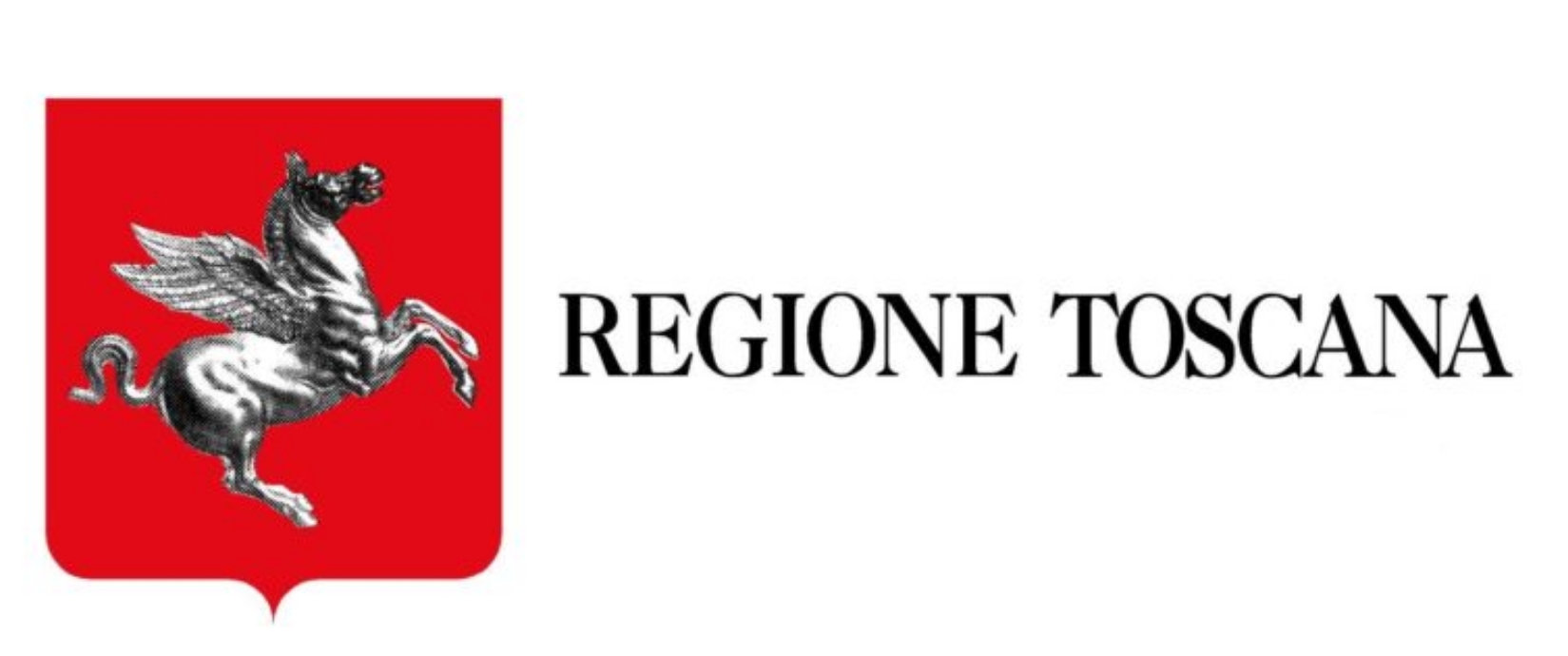
La Via di Francesco is a set of routes that radiate for about 400 kilometres in the eastern part of Tuscany, leading into Umbria as far as Assisi and reaching the places dear to Saint Francis, one of the most venerated figures in the Christian tradition.
A route divided into 25 stages and stretching between the provinces of Florence and Arezzo in the Tuscan stretch and divided into three interconnected sections: Florence-La Verna, with a northern route passing through Consuma and a southern one through Vallombrosa and Poppi, La Verna-Anghiari, with an eastern route passing through Pieve Santo Stefano and Sansepolcro and a western one through Caprese Michelangelo, and Anghiari-Cortona. There are also stretches that reach beyond the region to the Cammino di San Francesco from Rimini to La Verna and the Umbrian path with a beautiful and spiritual ending in the sanctuary city of Assisi.
Embracing spirituality, history, art and good food and immersed in evocative natural landscapes, this path begins in Florence, home to the world's largest Franciscan church, the Basilica di Santa Croce. It then crosses some beautiful Tuscan valleys covered with lush woodlands and home to ancient historical and religious sites such as the Sieve, Arno, Casentino, Tiber and Chiana Valleys.
Extraordinary hermitages and sanctuaries on foot

The path network includes particularly evocative places where nature and spirituality merge and are often linked to the life of the Saint. The Sanctuary of La Verna, an oasis of peace surrounded by the majestic beeches and silver firs of the Casentino woodlands, is where Saint Francis received the stigmata. The Camaldoli complex, comprising the monastery, sacred hermitage and ancient pharmacy, is a place where time seems to stand still. On the slopes of Pratomagno is the Abbey of Vallombrosa, surrounded by sacred forests overseen for centuries by monks. The Hermitage of Le Celle on the outskirts of Cortona, the first monastery built by Saint Francis, is a blend of nature and spirituality.
Other sacred buildings that are smaller yet no less beautiful and enchanting include the Hermitage of Cerbaiolo in Pieve Santo Stefano, a remote hermitage gifted to Saint Francis and inhabited by Franciscan friars until the end of the 18th century, considered the ‘little brother’ of the La Verna Sanctuary, and the Hermitage of Montecasale in Sansepolcro, a charming little monastery immersed in the nature of the Upper Tiber Valley, one of the Saint's favourite places.
Walking through parks is an ode to nature

The path is largely immersed in unspoilt landscapes rich in biodiversity, reflecting Saint Francis’ love of nature and animals, already celebrated in his Canticle of the Creatures. Wild landscapes protected by national parks and reserves such as the Casentinesi, Monte Falterona and Campigna Forest National Park, one of the most important woodland areas in Italy, with centuries-old forests populated by rare species, the Alpe della Luna Nature Reserve, known for its abundant springs, streams and waterfalls, located in the Upper Tiber Valley with spectacular landscapes such as the Ripa della Luna rock formation, the Sasso di Simone Nature Reserve, a limestone massif bordering the Marche region, the Vallombrosa Biogenetic Nature Reserve, in the Upper Arno Valley, a forest home to Italy’s two tallest trees, and the Monti Rognosi Nature Reserve, a rugged-looking but biodiversity-rich area near Anghiari, with outcropping ophiolitic rocks creating a unique landscape.
In the presence of small villages and great castles

Step by step, you walk into remote history, which has left a medieval heritage of great importance. Along the way, you can admire strongholds of timeless charm such as Poppi Castle, a manor that belonged to the powerful House of Guidi, a perfectly preserved example of medieval architecture and a symbol of the Casentino Valley, as well as the beautiful village of Monterchi, perched in the hilly landscape of the Tiber Valley and known for housing one of Piero della Francesca's masterpieces, Anghiari, one of Italy’s most beautiful villages, famous for its rich architectural and artistic heritage and for the battle of the same name, and Castiglion Fiorentino, a town dominated by the Cassero Tower, with ancient origins, once an important Etruscan centre. Completing the historical points of interest is the enchanting Cortona, the town dominating the Chiana Valley from its hilltop position, with its prosperous Etruscan past rich in art, history and places of worship.
Great works and artists, from Giotto to Piero della Francesca

The starting point of the walk is Florence, with all its wonders, beginning in front of the beautiful Basilica di Santa Croce. This Italian Gothic masterpiece houses artistic treasures depicting the life of Saint Francis, with works by Brunelleschi, Giotto and Donatello, as well as the tombs of illustrious figures such as Galileo, Michelangelo and Ugo Foscolo. The route leaves the centre of Florence, skirting the right bank of the Arno River and offering views of contemporary art at the Enzo Pazzagli art park, near Sant'Andrea a Rovezzano, an outdoor museum immersed in greenery and enriched by numerous works by this artist.
Continuing along the route, you then encounter the magnificent Arezzo, which welcomes pilgrims and travellers with its majestic Piazza Grande and is home to religious treasures of great value. Examples of this are the Cathedral, preserving several masterpieces by Andrea Della Robbia and Piero della Francesca, and the Basilica of Saint Francis, with its simple style, guarding a treasure trove of sacred art including the famous cycle of frescoes, the Legend of the True Cross, by the renowned Tuscan painter.
Dining on mountain and valley flavours

Exploring a land also means tasting the traditional local products and, along the Via di Francesco, there are many opportunities to try the excellent products of this area. The Chiana Valley is renowned for its large Chianina cattle breed, a culinary delicacy that enriches authentic and traditional local dishes. The Consuma Pass, which connects the Arno and Casentino Valleys, not only offers spectacular views but is also home to inns renowned for their schiacciata della consuma bread. In Lastra di Corezzo, a small village in the heart of the Casentino forest park, they make tortelli alla Lastra, a recipe of ancient origins, as well as other traditional products such as Rimbocchi’s bread, cakes and handmade cantucci. Caprese Michelangelo, the birthplace of Michelangelo Buonarroti, offers authentic local flavours such as PDO chestnuts from the surrounding chestnut woods and delicious woodland products like mushrooms and truffles, used as special ingredients in traditional local recipes.
For more information, click here


